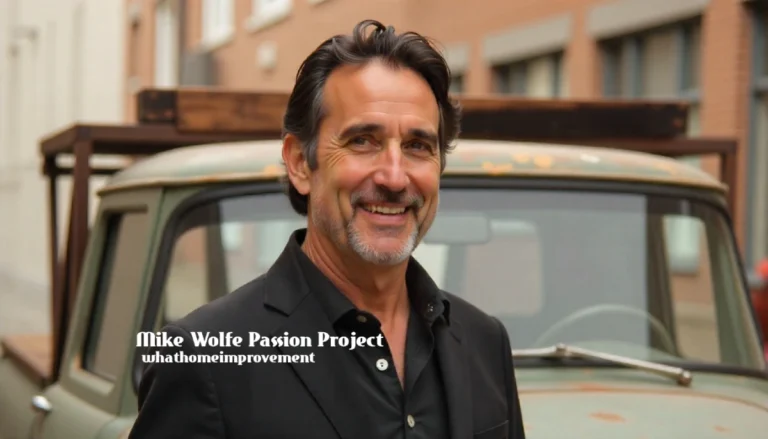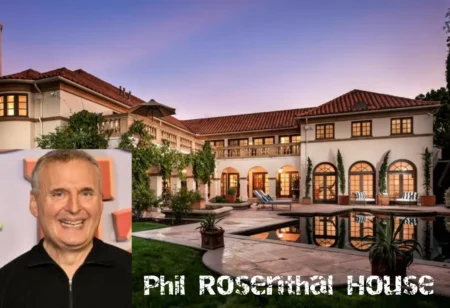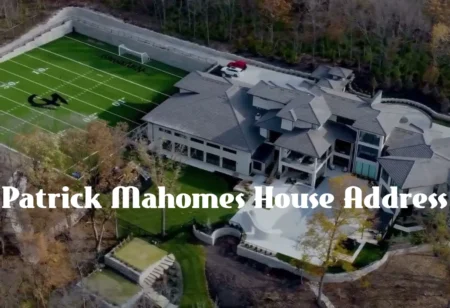Most people know Mike Wolfe as the charismatic host of American Pickers, but his true legacy lies beyond television screens. The Mike Wolfe passion project represents a systematic approach to historic preservation that’s creating measurable economic benefits in small-town America. Heritage tourism spending averages $336.24 per person per overnight trip, and Wolfe’s restoration work is helping communities capture this growing market.
What Makes the Mike Wolfe Passion Project Different
The Mike Wolfe passion project extends far beyond collecting vintage items for television. This initiative focuses on restoring historic buildings, supporting local artisans, and creating community gathering spaces that generate long-term economic value. Unlike typical real estate flipping, Wolfe’s approach preserves architectural integrity while adapting structures for modern use.
His work centers primarily in Columbia, Tennessee, where he has purchased and restored multiple 19th-century buildings. The crown jewel of these efforts is the transformation of a derelict Esso gas station into “Revival,” a restaurant and community space featuring outdoor seating and fire pits. Wolfe announced this project in May 2025, describing it as “something that generations of people can enjoy for years to come”.
This approach demonstrates how individual passion projects can scale into community-wide economic development strategies.
Historic Preservation Delivers Strong Economic Returns
Research shows that historic preservation creates more economic impact than new construction. For every 100 jobs in historic rehabilitation, 186 additional jobs are created elsewhere in the economy, compared to only 135 jobs for new construction. This higher multiplier effect occurs because rehabilitation requires more skilled labor and sources materials locally.
The preservation industry generates substantial direct economic activity. In New Jersey alone, historic preservation creates $580 million in annual direct economic effects, supporting over 21,000 jobs nationwide. These figures demonstrate how preservation projects like Wolfe’s contribute to broader economic growth.
Historic districts also attract job growth at disproportionate rates. In Nashville, 40% of job growth occurred in historic districts compared to 9% in the rest of the city. This data supports Wolfe’s strategy of concentrating restoration efforts in specific geographic areas.
Key economic benefits include:
- Higher property values in surrounding areas
- Increased tourism revenue and visitor spending
- More jobs per dollar invested compared to new construction
- Enhanced local business development opportunities
Heritage Tourism Market Drives Community Investment
The heritage tourism industry represents a massive and growing economic opportunity. The global heritage tourism market reached $604.38 billion in 2024 and is projected to grow at 4.5% annually through 2030. In the United States specifically, the heritage tourism market is expected to reach $162.4 billion by 2030, growing at 4% annually.
This growth creates opportunities for communities that invest in historic preservation. Heritage tourists typically spend more money and stay longer than other visitors. Heritage tourism spending in Missouri averaged $336.24 per person per overnight trip in 2023, with funds distributed across hotels, restaurants, shops, and local businesses.
The Two Lanes brand, part of Wolfe’s passion project, capitalizes on this trend by celebrating America’s backroads culture. The brand combines storytelling, vintage merchandise, and travel experiences that attract heritage tourists seeking authentic connections to American history.
Columbia Tennessee Transformation Shows Local Impact
Columbia, Tennessee serves as the primary laboratory for the Mike Wolfe passion project. This historic town in Maury County has benefited from Wolfe’s systematic approach to preservation and community development. His investments include the restored Esso gas station, multiple residential properties, and commercial buildings that now house local businesses.
The economic impact extends beyond individual buildings. Historic preservation attracts heritage tourism, fosters community revitalization, creates business incubation locations, and increases sustainability and value. In Columbia, these effects are visible in increased foot traffic, new business openings, and enhanced community pride.
Wolfe’s approach differs from typical gentrification because it preserves existing character while creating affordable spaces for local entrepreneurs. The restored buildings often become incubators for small businesses, contributing to economic diversity and resilience.
Tourism data from nearby regions supports the economic potential. North Carolina achieved record tourism spending of $36.7 billion in 2024, with visitor spending increasing in 71 of 100 counties. Similar growth patterns are emerging in Tennessee communities that invest in heritage preservation.
Building Community Through Authentic Preservation
The Mike Wolfe passion project emphasizes community engagement over pure profit motives. Each restoration project involves collaboration with local historians, craftspeople, and business owners to ensure authentic preservation that serves community needs.
This collaborative approach creates multiple economic benefits:
- Skilled job opportunities for local craftspeople and contractors
- Training and apprenticeship programs that build local capacity
- Support for traditional building trades and historic preservation skills
- Creation of gathering spaces that strengthen community bonds
Historic preservation provides tangible connections to the people and events that have shaped communities while creating a sense of place and community pride. Wolfe’s work demonstrates how preservation projects can balance economic development with cultural stewardship.
The Revival restaurant exemplifies this philosophy. Rather than creating a generic dining establishment, the space maintains its historic gas station character while providing modern amenities. This approach attracts visitors while serving as a neighborhood gathering place.
Supporting Local Artisans and Traditional Crafts
A key component of the Mike Wolfe passion project involves supporting American makers and traditional craftspeople. Through his restored spaces and Two Lanes platform, Wolfe creates markets for artisans who might otherwise struggle to reach customers.
This support system generates economic activity in several ways:
- Direct sales of handcrafted goods through curated retail spaces
- Workshop and studio rentals in restored buildings
- Collaboration opportunities between artisans and preservation projects
- Educational programs that teach traditional building and craft skills
The economic impact extends beyond immediate sales. By preserving traditional skills and supporting local production, these initiatives create sustainable economic opportunities that cannot be easily outsourced or automated.
Historic preservation projects require specialized skills in areas like masonry, timber framing, and decorative arts restoration. Supporting these trades ensures that communities maintain the capacity for ongoing preservation work while creating career paths for skilled workers.
Measuring Long-Term Economic Success
The true measure of the Mike Wolfe passion project’s success lies in its long-term economic and social impacts. Early indicators suggest positive results across multiple metrics.
Property values in Columbia’s historic districts have increased as restoration projects demonstrate the area’s potential. New businesses have opened in restored buildings, creating jobs and tax revenue. Tourism interest has grown as the town becomes known for its preservation efforts.
Historic preservation enhances real estate values and fosters local businesses, keeping historic main streets and downtowns economically viable. These benefits compound over time as successful preservation projects inspire additional investment.
The model also demonstrates scalability. While Wolfe’s celebrity status provides initial attention, the underlying preservation and economic development strategies can be replicated in other small towns with similar historic assets.
FAQ Section
What is Mike Wolfe’s passion project?
A community revival initiative focused on restoring historic buildings, particularly in Columbia, Tennessee, to create gathering spaces and support local economies.
How much does heritage tourism contribute to local economies?
Heritage tourism spending averages $336.24 per person per overnight trip, distributed across hotels, restaurants, shops, and local businesses.
What buildings has Mike Wolfe restored?
His most notable project is transforming a historic Esso gas station in Columbia, Tennessee into “Revival,” a restaurant and community space.
How does historic preservation create jobs?
Every 100 jobs in historic rehabilitation creates 186 additional jobs elsewhere in the economy due to higher skilled labor requirements.
What is the Two Lanes brand?
A lifestyle brand celebrating America’s backroads culture through storytelling, vintage merchandise, and travel experiences.
The Mike Wolfe passion project proves that individual preservation efforts can create measurable economic benefits for entire communities. By combining authentic restoration with strategic economic development, this approach offers a replicable model for small-town revitalization across America.






